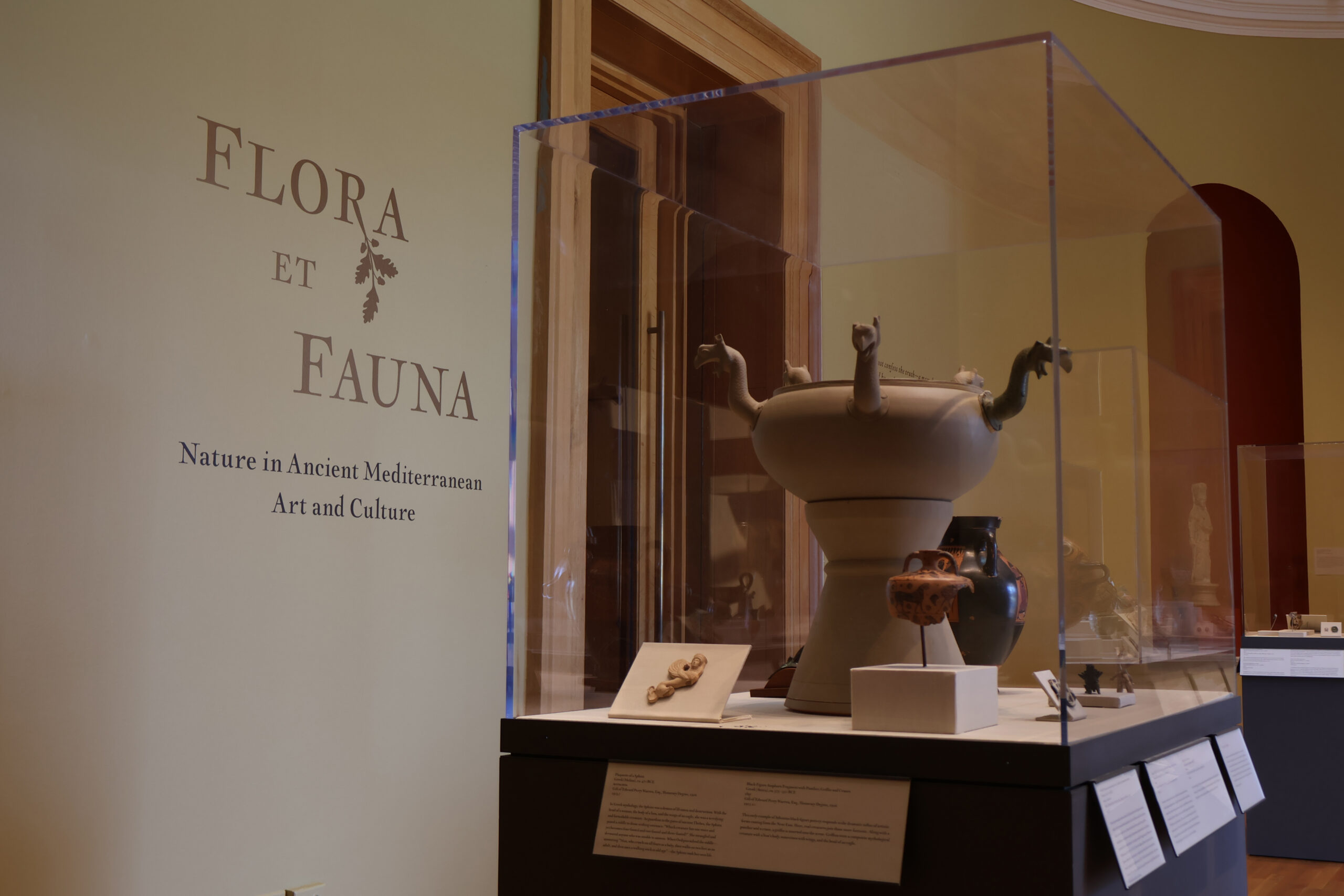BCMA’s “Flora et Fauna” explores the representations of nature in ancient Mediterranean art
April 18, 2025
 Abigail Hebert
Abigail HebertOn March 6, “Flora et Fauna” opened at the Bowdoin College Museum of Art (BCMA). Featuring objects ranging from a cauldron to a pair of earrings, the exhibit spans from 1300 BCE to 400 CE, focusing largely on depictions of the natural world in ancient Mediterranean societies.
James Higginbotham, associate professor of classics and associate curator for the ancient collection, curated the exhibit. Higginbotham sought to shift attention from humans to nature in ancient art.
“If you go into exhibitions and you look into the rotunda, you can see the human figure is celebrated over and over again as a focus,” Higginbotham said. “The earliest representations in art that we have that go back to prehistory are of plants and animals. And so that stimulated an interest that I had in exploring something that often is in the background or we take for granted, but was ever-present in almost everything that we look at.”
Grace Campbell ’27, a student of Higginbotham’s, noted that this angle of looking at ancient Mediterranean art is often overlooked.
“I think, in popular media, everything we see is often saturated with the regular human forms in Aegean art, Greek Olympic runners or impressive Roman statues, but we often aren’t shown what Professor Higginbotham is highlighting here,” Campbell wrote in an email to the Orient.
Higginbotham emphasized how the natural world acted as inspiration for ancient artists.
“The miraculous appearance of animals in nature often informs pieces of religion and mythology,” Higginbotham said. “The natural world is really a source of inspiration, but it’s a fundamental component of building ideas and building beliefs.”
Anne Goodyear, co-director of the BCMA, recognized Higginbotham’s focus on nature as a way to connect ancient Mediterranean art to the present.
“I think about issues of the natural environment, which, of course, are so relevant in our own day and age,” Goodyear said. “I like the fact that in terms of thinking about how the environment, how animals in their natural world have not only been pictured but also conceptualized by early generations; earlier generations [are] extremely interested in providing some perspective on how we relate to our own world today.”
Campbell agreed with this sentiment.
“What I most appreciate about ‘Flora et Fauna’ is that it bridges modern and ancient perspectives of the natural world, showing us familiar animals through the eyes of those who have come before us,” Campbell wrote. “It does both this as well as showing us how ancient peoples then took these animals which are the same as we see, but shaped them into fantastical creatures like the griffin or the sphinx.”
Having worked as an associate curator for the BCMA for almost two decades alongside teaching and researching as a professor, Higginbotham is intimately familiar with both the museum’s collections and staff.
“He is a very special colleague who both serves as the curator of our antiquities, but also, of course, teaches,” Goodyear said. “He’s someone who brings both great expertise in terms of collections that stretch back thousands of years, but at the same time, I think he has a real sensitivity to what makes those collections meaningful and relevant in the present day.”
Goodyear noted that Higginbotham is extremely thoughtful in his approach to presenting objects.
“One of the things that [Higginbotham] is particularly sensitive to is the question of how people will respond to objects,” Goodyear said. “He is somebody who loves working with students, and I think, as a result, is actually very sensitive to the tactility of objects.… He really understands and tries to convey a strong sense of what it was like to work with these objects, what this range of objects meant in terms of daily life.”
Higginbotham hopes that those who visit “Flora et Fauna” will make connections between ancient art and modern life.
“I hope that [visitors] will come away from here and leave with a favorite, something that they haven’t seen before, make connections, not just going to go through and see everything in a particular order, but notice that there are connections between ancient Egypt and ancient Greece [to today],” Higginbotham said.

Comments
Before submitting a comment, please review our comment policy. Some key points from the policy: